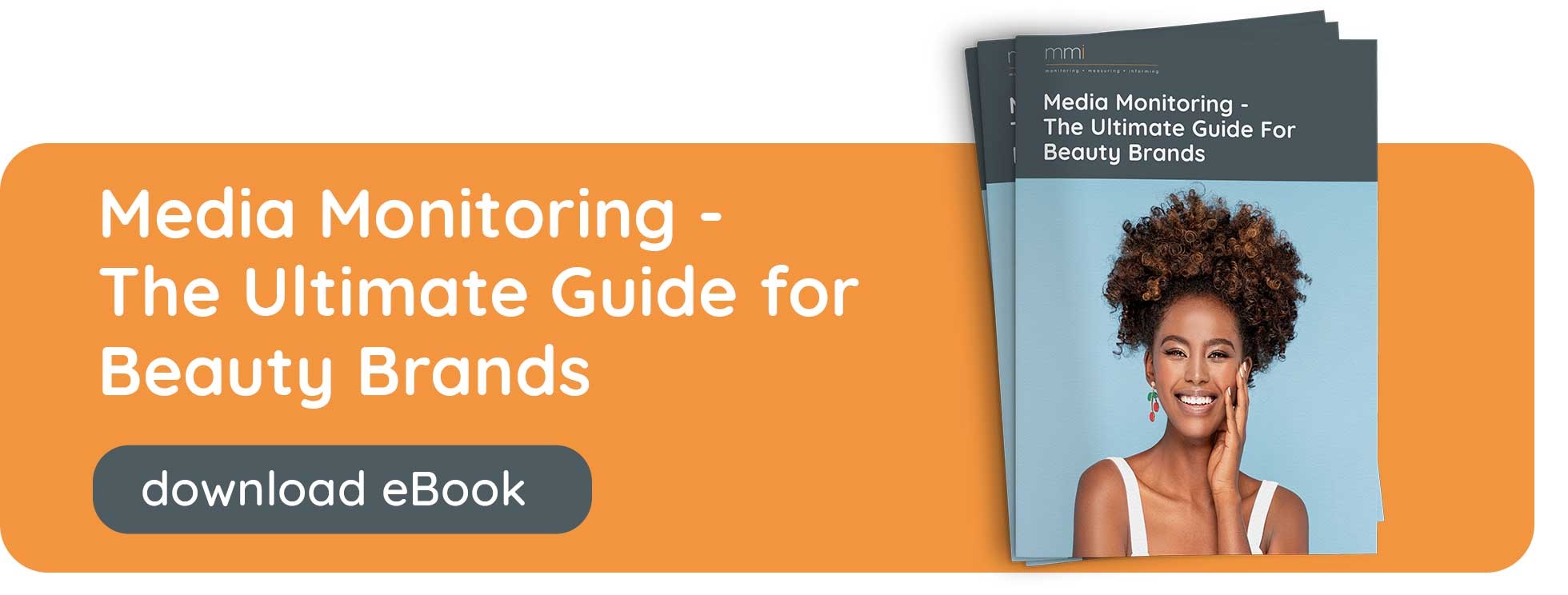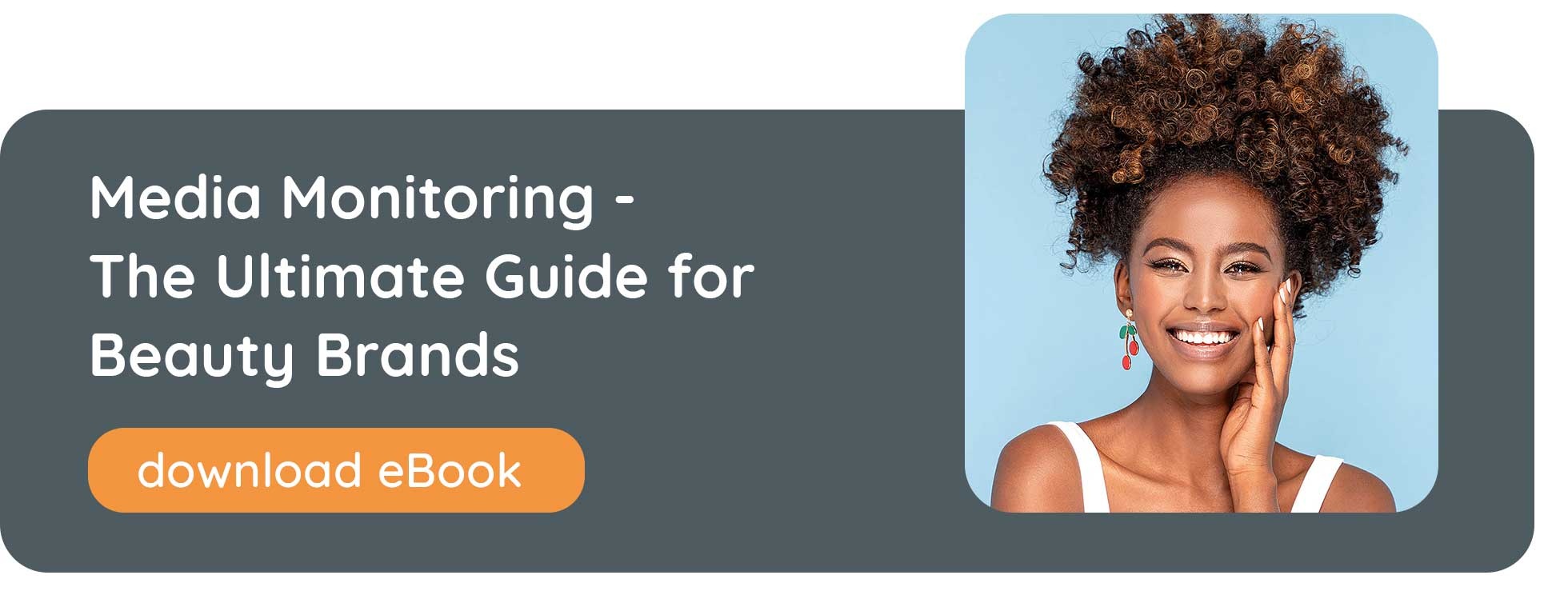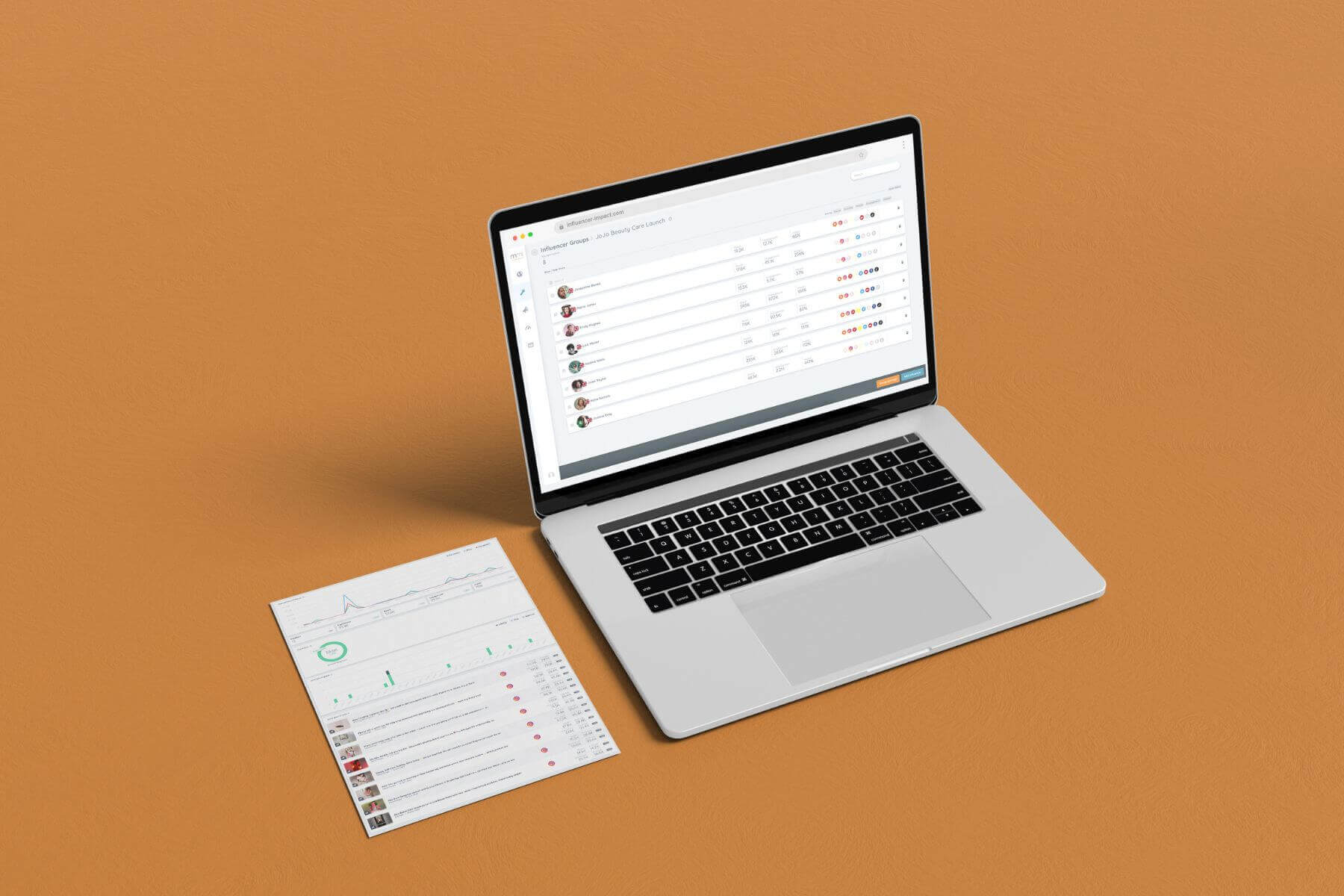With so many media platforms available – from print, to social media, to online magazines – reviewing beauty brand coverage can be an overwhelming task. However, with the right media monitoring tool, it should be possible to categorise your coverage, and that of your competitors, for quick access to the data most applicable to you.
This is all the more pertinent in the beauty industry, where the market is multifaceted, comprising Skincare, Haircare, Cosmetics, Fragrance and Body Care brands. While they all fall under the Beauty umbrella, comparing Fragrance with Skincare or Cosmetics with Haircare can skew the data and result in an uneven playing field. Add in the fact that some brands, such as Dior, straddle a number of those categories, and it’s easier still to see why categorising media mentions is key.
The good news is, categorising is the easy part. mmi’s media data is broken down into over 250 beauty product categories, from hair colourant to eyeliner. This data structure allows PR and communications teams to fully understand the category they are operating in. But then what do you do with that data? Here’s how to act upon your findings…
What to Look for in Your Category
1. The Most Successful Products
Look first at the products with the highest volume of mentions and earned media value (EMV) in your category. This helps you understand what’s already gaining buzz in your target sector. With the right tool, you can even drill down further from Cosmetics, for example, into products, such as Mascara. In doing so, you’ll quickly spot the highest performing mascaras on the market.
2. The Media Brands are Targeting
Of the most successful products, you’ll then want to see what media types they’re targeting. Are there certain influencers they’re working with? Have they enjoyed an exclusive in a magazine? Take note of the coverage they’re getting, where they’re featured, and potential partnerships or affiliations. This is especially crucial when you want influencer coverage to be authentic and not diluted by other brands.
3. The Messaging They Have Used
Sometimes, when a product gains a high volume of coverage in the media, it may be because the messaging they’ve used is particularly relatable or compelling. Perhaps they’re pioneering a new trend, they’ve tapped into cutting-edge technology for their formula, or they’re answering a current consumer need. Case in point: Urban Decay’s cult-classic All Nighter Setting Spray received a wave of fresh coverage at the start of the pandemic because, as influencers and journalists revealed, it helps makeup stay in place underneath a face mask. Look carefully at high performing brands’ messaging and campaign visuals, and you may discover one of the keys to their PR success.
4. The Ambassadors They Work With
On average, beauty brands report a return on investment (ROI) of £8.81 for every £1 spent on influencers and ambassadors. As such, these partnerships are rife in the industry, forming a key cornerstone of many brands’ PR and marketing strategies, and making them instantly newsworthy. Observe the ambassadors that are garnering attention for their respective brands. This may give you inspiration for your own future partnerships.
How to Use the Categorised Data
1. Follow Power Players’ Leads
While you won’t want to copy another brand’s PR strategy entirely, taking cues from their coverage can help you make more informed planning decisions. For example, if you can see that a certain magazine mention or e-zine shoutout has increased their sales, you may want to reach out to those same journalists about your latest launch. And, while working with the exact same influencers as your competitors can dilute messaging, taking inspiration from their talent choices could help you reach a similar demographic.
2. Forge Your Own Path
You can also use your categorised data to forge a path of your very own, by spotting opportunities competitors have missed and targeting that media. You’ve heard of a ‘gap in the market’ – now look for gaps in their PR strategies, then reap the rewards of standing out and holding the spotlight with influencers and publications other brands have missed.
Furthermore, a fusion of the two points above may help you take your PR strategy to a new level; one where you leverage tried-and-true tactics, while also targeting other brands’ missed opportunities.






